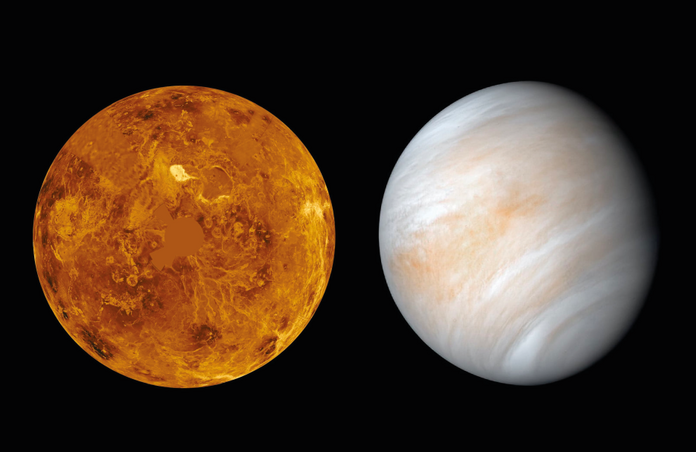Venus – Our Cloudy Volcanic Neighbor

Seems like right now is the best and craziest time to get into astronomy and planetary exploration. After the successful missions to Mars this year, NASA actually plans to go to the next Planet – Venus. (after 30 years)
Venus is the 3rd smallest Planet in the solar system (after Mercury and Mars) with a diameter of 7500 miles (~12.100km) and has an orbit around the sun in 225 days.
Fun fact: one day on Venus is like you live 241 days on Earth. Because one axis rotation takes longer than an orbit around the sun. – WHAT?
Last week NASA newly announced that by 2030 it will send two new planetary missions to this vast cloudy, volcanic neighbor in order to get to know its atmosphere and topography.
DAVINCI+ (DEEP ATMOSPHERE VENUS INVESTIGATION OF NOBLE GASES, CHEMISTRY AND IMAGING)
is one of the missions and will measure the composition of Venus’ atmosphere to understand how it formed and evolved. It also tries to find out if this volcanic planet ever had an ocean. The mission consists of a descent sphere that will plunge through the planet’s thick atmosphere, make measurements and tries to take the first high resolution picture of the planets surface.
VERITAS (VENUS EMISSIVITY, RADIO SCIENCE, INSAR, TOPOGRAOHY AND SEPCTROSCOPY)
This is the name of the second mission and will map the surface of Venus to determine why it developed so differently than Earth. VERITAS will create a 3D construction of the surface and confirm whether processes like plate tectonics and volcanism are still active on the planet.
DID YOU HEAR ABOUT THESE TWO MISSIONS AND ARE YOU INTERESTED IN PLANETARY SCIENCE/EXPLORATION?
This blog post was originally published in our Telescope Live Community.
The Community represents Telescope Live's virtual living room, where people exchange ideas and questions around astrophotography and astronomy.
Join the conversation now to find out more about astrophotography and to improve your observation and post-processing skills!
